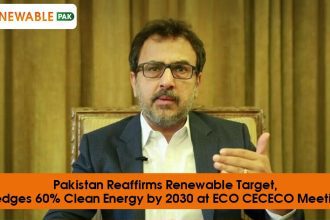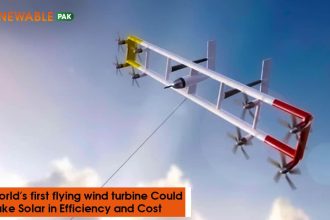With massive projects, national strategies, and billions of dollars in investment, green hydrogen power is quickly emerging as the Middle East’s new energy frontier, with the potential to revolutionise the region’s sustainability and export potential.
The Renewable Advantage of the Middle East in the Competition for Hydrogen Power
In the twenty-first century, green hydrogen power is quickly becoming one of the Middle East’s most important energy prospects. The region has a natural advantage in producing clean hydrogen at prices that are competitive with those of other countries because its vast deserts provide some of the most abundant solar and wind resources in the world. Billions of dollars are currently being invested in massive projects by governments, investors, and energy companies in order to meet the growing demand for clean fuels both domestically and internationally.
This shift is a deliberate attempt to diversify economies that have historically relied on the export of petrol and oil, in addition to achieving climate goals. The Middle East is putting itself at the forefront of a global race, from Oman’s green hydrogen power development zones to Saudi Arabia’s futuristic NEOM project. If these initiatives are successful, the area may change its position in the global energy landscape for many years to come, moving from a fossil fuel powerhouse to a leader in clean energy.
1. A Strategic Regional Competition for Green Hydrogen Power
Numerous nations in the Middle East have started aggressive hydrogen initiatives.
Saudi Arabia is leading the way in the development of green and blue hydrogen through its Vision 2030, particularly with the $8.4 billion NEOM Green Hydrogen Project. It will generate up to 1.2 million tonnes of green ammonia annually and 600 tonnes of clean hydrogen per day when it is operational in 2026, assuming 3.9 GW of solar, wind, and storage capacity.
As previously reported, The United Arab Emirates’ National Hydrogen Strategy, which was introduced in 2023, aims to produce 1.4 million tonnes of low-carbon hydrogen annually (Mtpa) by 2031, increasing to 15 Mtpa by 2050.
Using its ports and renewable resources, Oman has announced plans to increase green hydrogen production to 1 Mtpa by 2030, 3.7 Mtpa by 2040, and 8.5 Mtpa by 2050.
Egypt recently inked Memorandums of Understanding for renewable energy and green hydrogen in the Suez Canal region, valued at an estimated $40 billion.

2. Partnerships for Exports and Investments
Through cross-border collaborations and billion-dollar projects, the region is putting strategy into practice.
In July 2025, Saudi Arabia’s ACWA Power inked Memorandums of Understanding with Siemens Energy, EnBW, Edison, and TotalEnergies in Europe to promote green hydrogen exports through energy corridors.
However, the NEOM project is having trouble finding buyers abroad and is now thinking about shifting to domestic use or slowing down development.
By 2030, 17.6 million metric tons of hydrogen will be produced in the Middle East, with 0.8 million tons exported, according to analysts. Production may reach 9.1 Mt by 2040, and exports may increase to 2.4 Mt.
According to Roland Berger and Dii Desert Energy, GCC countries could use green hydrogen to create up to $200 billion in revenue and one million jobs by 2050.
3. Potential, Difficulties, and Risk Factors
Although it has many challenges, green hydrogen power has great potential; the Middle East’s competitive advantage is highlighted by the Platts estimate, which states that hydrogen produced in Qatar via alkaline electrolysis could cost roughly $4.12/kg, while it would cost almost $8/kg in Europe and Japan.
But dangers are still present. A study that modelled the weighted average cost of capital (WACC) in the MENA region discovered stark differences that had a major effect on export competitiveness, ranging from 4.67% in the United Arab Emirates to almost 25% in Yemen and Syria.
More generally, a global analysis warns of an “implementation gap”: despite the nearly threefold increase in global hydrogen project pipelines, only 7% of announced capacity has been realised on time. Subsidies could range from $0.8 to $2.6 trillion to meet future targets.
4. Sustainable Momentum & Regional Innovations
Green hydrogen is still being advanced by regional innovation, not just megaprojects.
Egypt plans to complete the Forbes International Tower, a hydrogen-powered skyscraper in its new capital, by 2030. It will be powered by 25% solar energy and the remaining portion by clean hydrogen power.
Additionally, according to reports, Masdar, the UAE’s leader in renewable energy, plans to produce one million tonnes of green hydrogen a year by 2030 with the help of international alliances and AED 600 billion in clean energy investments.
5. Outlook & Quotations
“The area has some of the lowest levelized costs of producing hydrogen from renewable sources in the world.” S&P Global analysts emphasise that the Middle East’s cost advantage puts it in a position to dominate international markets.
“The export model for the NEOM project is being recalculated due to demand risk.”, Bloomberg reports highlight the challenges that even the most ambitious projects, like Energy Connects, face.
Final Thoughts
Green hydrogen power’s rise in the Middle East is more than just a passing energy fad; it’s a calculated move that has the potential to permanently alter the region’s geopolitical and economic landscape. Governments and private investors are working together to transform vast renewable resources into a clean energy export sector, as seen in Saudi Arabia’s NEOM mega-project and Oman’s ambitious roadmap led by Hydrom. The Middle East has distinct advantages in the global hydrogen race due to its competitive production costs, advantageous shipping location, and strong political will. Additionally, the industry provides a means of economic diversification by lowering the region’s dependency on fossil fuels, fostering innovation in renewable technologies, and possibly generating hundreds of thousands of new jobs.
However, this change is not assured. Securing steady demand from global markets, maintaining competitive financing, developing export infrastructure, and controlling the still high costs of hydrogen production are the major obstacles. The gap between ambition and execution is highlighted by the numerous announced projects that experience delays or scope reductions. The region will require significant investments, well-defined policy frameworks, strategic trade alliances, and ongoing advancements in electrolysis and storage technologies in order to close that gap. Together, these factors could position the Middle East as a leader in the global hydrogen economy, providing clean energy leadership overseas and energy security domestically.
References:
https://www.altenergymag.com/story/2025/07/green-hydrogen-the-middle-easts-new-energy-frontier/45842
https://www.frontiersin.org/journals/energy-research/articles/10.3389/fenrg.2025.1546876/full












